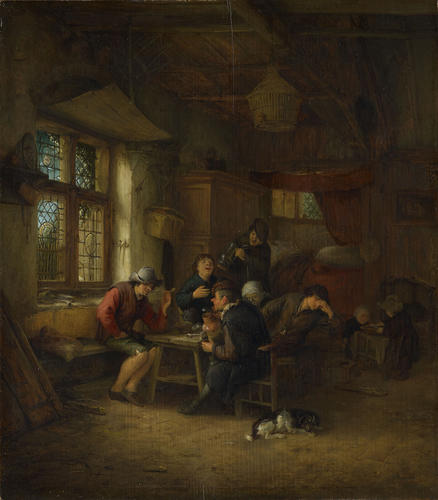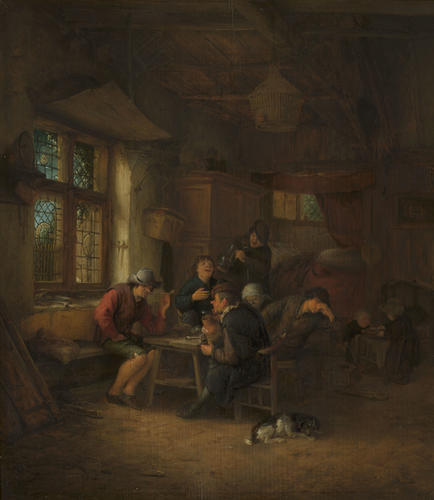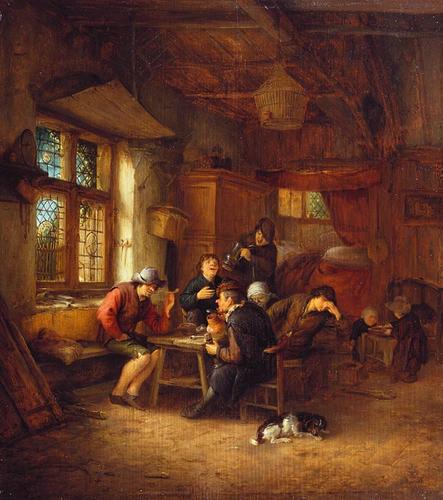Interior of Tavern with a Five Peasants and a Woman Signed and dated 1646
Oil on panel | 35.2 x 31.4 cm (support, canvas/panel/stretcher external) | RCIN 404575

Adriaen van Ostade (Haarlem 1610-Haarlem 1685)
Interior of Tavern with a Five Peasants and a Woman Signed and dated 1646

Adriaen van Ostade (Haarlem 1610-Haarlem 1685)
Interior of Tavern with a Five Peasants and a Woman Signed and dated 1646



-
Adriaen Brouwer was the artist who first introduced this type of interior scene to Holland; we must assume that Adriaen van Ostade was familiar with Brouwer’s work and perhaps studied with him. The Brouwer formula, which Ostade adopts in this relatively early work, involves a dingy brown low-life interior lit from the left, full of comical rag-doll peasants. Cheap earth colours are applied thinly, with much under-paint showing through especially in the shadows; the light areas are executed with a rapid flick of the brush. The artist’s skill lies in the amount of detail (and sheer number of different things) which can be suggested by these rapid and economical means. Such paintings were sought during the artist’s life time (when they were cheap) and during the eighteenth and nineteenth centuries (by which time they had become very expensive). Diaries of English visitors to Holland in the seventeenth century describe how paintings can be seen in the roughest interiors; one appears on the wall at the right edge of this painting.
Ostade has looked at Gerrit Dou as well as Brouwer: the light spreading from the window is beautifully observed (glass windows was something of a luxury at this date especially for pubs). The bed visible at the back and the children to the right might suggest that this is a cottage rather than tavern scene, or at least that it is difficult to distinguish between the two. One of the drinkers holds his nose at a bad smell (perhaps the child’s potty behind him) while another laughs at him. Realist paintings of this type often try to evoke senses other than sight.
Inscribed: 'Av. Ostade / 1646'Provenance
Purchased by George IV from Sir Thomas Baring as part of a group of 86 Dutch and Flemish paintings, most of which were collected by Sir Thomas’s father, Sir Francis Baring; they arrived at Carlton House on 6 May 1814; recorded in the Bow Room, Ground Floor, at Carlton House in 1819 (no 117); in the Picture Gallery at Buckingham Palace in 1841 (no 103)
-
Medium and techniques
Oil on panel
Measurements
35.2 x 31.4 cm (support, canvas/panel/stretcher external)
53.3 x 49.0 x 4.5 cm (frame, external)
Category
Object type(s)
Other number(s)







